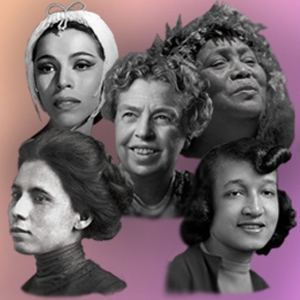 |
| The late Edith Kanakaʻole was a guardian and instructor of Native Hawaiian culture. |
An award-winning composer and former instructor at Hawaiʻi Community College and UH Hilo, Kanakaʻole will be one of five American women to be minted on new quarters next year, joining fellow honorees such as former first lady Eleanor Roosevelt and Maria Tallchief, America’s first Native American prima ballerina.

The first batch of quarters featured Asian American acting legend Anna May Wong's image, the first AAPI to appear on U.S. currency.
Others featured in the first issuance of commemorative quarters also included: Maya Angelou; astronaut Sally Ride; suffragist and politician Nina Otero-Warren; and Wilma Mankiller, the first female principal chief of the Cherokee Nation.
"The range of accomplishments and experiences of these extraordinary women speak to the contributions women have always made in the history of our country," said Mint Deputy Director Ventris Gibson in a statement issued in March during Women's History Month. "I am proud that the Mint continues to connect America through coins by honoring these pioneering women and their groundbreaking contributions to our society."
During her time at Hawaiʻi CC and UH Hilo, Kanakaʻole developed a variety of courses on ethnobotany, Polynesian history, genealogy and Hawaiian chant and mythology.
Pualani Kanakaʻole Kanahele, a retired Hawaiʻi CC Hawaiian studies professor and daughter of the late Kanakaʻole, released this statement on the Edith Kanakaʻole Foundation website:
Pualani Kanakaʻole Kanahele, a retired Hawaiʻi CC Hawaiian studies professor and daughter of the late Kanakaʻole, released this statement on the Edith Kanakaʻole Foundation website:
“My mother was a ‘pusher’ but she always did it with a smile. She pushed all six of her children, when it was not yet a natural process for Hawaiians, toward higher education to earn a degree. When she became an instructor at the University of Hawaiʻi in Hilo, she encouraged Hawaiian students to 1) maintain their stay and earn their degree, 2) know who they were as Hawaiians and elevate the status of the Lāhui.”
In the late 1970s, Kanakaʻole recorded Hiʻipoi I Ka ʻĀina Aloha (Cherish the Beloved Land), which later captured a Nā Hōkū Hanohano award for Best Traditional Album of the Year. The album features mele (songs) that express her love for the land and includes compositions such as “Ka Uluwehi O Ke Kai” that celebrates the various limu of the sea, and is also a popular song performed by hula dancers of all ages.Kanakaʻole founded Hālau o Kekuhi, an internationally recognized dance company known for its ʻaihaʻa or low-postured, bombastic style of hula.
In the late 1970s, Kanakaʻole recorded Hiʻipoi I Ka ʻĀina Aloha (Cherish the Beloved Land), which later captured a Nā Hōkū Hanohano award for Best Traditional Album of the Year. The album features mele (songs) that express her love for the land and includes compositions such as “Ka Uluwehi O Ke Kai” that celebrates the various limu of the sea, and is also a popular song performed by hula dancers of all ages.Kanakaʻole founded Hālau o Kekuhi, an internationally recognized dance company known for its ʻaihaʻa or low-postured, bombastic style of hula.
In 1999, Kanahele helped launch I Ola Hāloa Center for Hawaiʻi Life Styles at Hawaiʻi CC. The program, which stresses the importance of Hawaiian cultural values and practices in higher education, is intertwined with teaching styles and lessons that stem directly from Kanakaʻole.
The other women who will be honored by having their image on the American quarter include:
- Bessie Coleman – pilot, advocate, and pioneer who flew to great heights as the first African American and first Native American woman pilot, as well as the first African American to earn an international pilot’s license.
- Jovita Idar – Mexican American journalist, activist, teacher, and suffragist. She devoted her life to fighting against separatist ideologies and sought to create a better future for Mexican Americans.
- Eleanor Roosevelt – first lady, author, reformer, and leader. As chairperson of the Human Rights Commission where she oversaw the creation of the Universal Declaration of Human Rights, and as the first chair of the U.N. Commission on Human Rights, she advocated diligently for the civil liberties and needs of the poor, minorities, and the disadvantaged.
- Maria Tallchief – America’s first prima ballerina, she broke barriers as a Native American ballerina who exhibited strength and resilience both on and off the stage.
EDITOR'S NOTE: Don't miss out on additional commentary, news and views from an AAPI perspective by following @DioknoEd on Twitter.
No comments:
Post a Comment